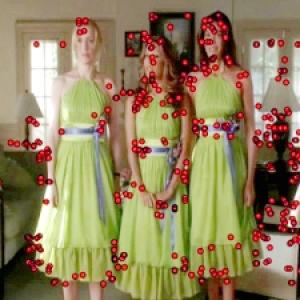CG Today - Motion Graphics News
Thursday, 06 January 2011 09:58
 New Analog Amplifier and Steerable Line Array Technologies Will Change Next-Generation Audio Product Design
New Analog Amplifier and Steerable Line Array Technologies Will Change Next-Generation Audio Product Design
LAS VEGAS, NV. - THX Ltd. today showcased an innovative new concept speaker array that will enable the creation of larger or multiple listening sweet spots in a room, providing the highest-quality sound for all listeners even in difficult acoustic environments. The concept prototype being demonstrated at the Consumer Electronics Show in Las Vegas is capable of 96 discrete channels that can be steered dynamically, creating new opportunities for CE manufacturers and content creators.
More Articles...
Bulletproof Outlaws
News Letter
Latest News
- Zombies Get The motion504 Treatment In New Chiller Promo For “Remains” Thriller
- Insomniac Games Uses Autodesk Software Suite to Up the Ante for ‘Resistance 3’
- Pixomondo Leads VFX For Martin Scorsese’s Hugo
- Stereobank Announces the Addition of Super Slow Motion 3D Footage
- BIGSMACK Creates Brand Campaign For National Geographic International
- House of Moves Develops Eye Tracking Process for Film and Game Animation
- Vicon House of Moves Captures Crash Test Performance for Lexus "Light" Commercial
- Tag Games Uses Autodesk 3ds Max for "Funpark Friends" 3D Mobile Game
- Brickyard VFX Creates Box Set for ESPN
- Digital Domain and Adam Berg Tap Virtual Production for Gears of War 3 "Dust to Dust"
- Brickyard VFX Helps Saatchi & Saatchi LA and 2012 Toyota Camry Do ‘Donuts’ Around Competition
Interviews
- Yash Chavan New Media Evangelist
- Sindhuja Rajamaran the youngest CEO and 2D Animator of India
- Exploring ‘Backstage Pass’ – The School of Gaming!
- ‘Toonpur Ka Superhero’ Kireet Khurana!
- Kumar Chandrasekaran, Head of Operations at Sanraa Media
- An interview with the ‘Prince of Vriksha’!
- Arun Suryawanshi – Academic Director of CANMAS
- Arunkumar Boyidapu - Lighting & Composting Artist at Sparky Animation
- Asadul Islam – Student VFX Artist
- Dominic Chander – Head of Animation at Sun Animatics
- Anjan Cariappa an Independent Animation Consultant
- Sabeer Ahluwalia the ‘Quantum Gabriel’!
- Vaseem Ashar – VFX Supervisor at ThinkingHands
- Alexander Lindner – Visual Consultant
- Kalyan Gali - Creative Head at Icronex Technologies
- Interview with Sathya Narayanan - Senior Production Coordinator at Amskray Visual Effects Studio
- Kushagra Gour – Founder and Owner of CCPRO Games

 2nd Generation Intel Core processor or also called Intel Sandy Bridge finally announced. Latest desktop and mobile processors include processor cores i3, i5, and i7 are included in total 29 new CPU that is integrated with the graphics options (now known as the graphics processor).
2nd Generation Intel Core processor or also called Intel Sandy Bridge finally announced. Latest desktop and mobile processors include processor cores i3, i5, and i7 are included in total 29 new CPU that is integrated with the graphics options (now known as the graphics processor).
 FX Design Group, LLC (FX) and motion graphics firm Giant Octopus (GO) officially closed December 8, 2010 and creates the first single source provider of set design, lighting design, motion and set graphic design and set fabrication/installation for broadcast television.
FX Design Group, LLC (FX) and motion graphics firm Giant Octopus (GO) officially closed December 8, 2010 and creates the first single source provider of set design, lighting design, motion and set graphic design and set fabrication/installation for broadcast television. ‘Ultimate Dinopedia’ is an interactive iPad encyclopedia with entries on more than 700 dinosaurs, featuring comprehensive data, entertaining narration, beautiful artwork and 3D videos that bring the world of Dinosaurs alive in your hand.
‘Ultimate Dinopedia’ is an interactive iPad encyclopedia with entries on more than 700 dinosaurs, featuring comprehensive data, entertaining narration, beautiful artwork and 3D videos that bring the world of Dinosaurs alive in your hand. You know when you're watching a pirated film downloaded from the Internet -- there's no mistaking the fuzzy footage, or the guy in the front row getting up for popcorn. Despite the poor quality, pirated video is a serious problem around the world. Criminal copyright infringement occurs on a massive scale over the Internet, costing the film industry -- and the U.S. economy -- billions of dollars annually.
You know when you're watching a pirated film downloaded from the Internet -- there's no mistaking the fuzzy footage, or the guy in the front row getting up for popcorn. Despite the poor quality, pirated video is a serious problem around the world. Criminal copyright infringement occurs on a massive scale over the Internet, costing the film industry -- and the U.S. economy -- billions of dollars annually.